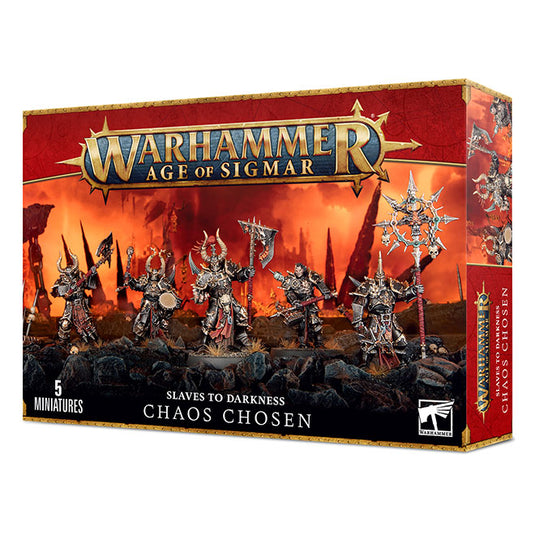Warhammer Age of Sigmar - Slaves To Darkness - Chaos Chosen



We will send you a notification as soon as this product is available again.
Chaos Chosen are elite devotees of the Ruinous Powers, champions who have garnered enough dark rewards to stand above their brethren. Armed with wicked soul-cleaving weapons, these ambitious heralds of ruination fight at the forefront of the Chaotic hordes, inspiring and terrifying those around them with acts of brutal violence.
This multipart plastic kit builds five Chaos Chosen – hardened warriors for Slaves to Darkness armies in Warhammer Age of Sigmar. Each of these deadly fighters is armed with a soul splitter – accursed two-handed weapons in the form of hammers, axes, mauls, and greatswords – and clad in ornate plate armour. One model can be built as an Exalted Champion, one as a Skull Drummer musician, and another as an Icon Bearer with either a flag or eight-pointed star – the kit includes five alternate sigils to dedicate your icon to Khorne, Slaanesh, Nurgle, Tzeentch, or Chaos Undivided. The other two models can be built with a choice of weapons, and the kit includes eight helmeted and four bare heads to choose from, allowing you to easily personalise your Chaos Chosen.
This kit comprises 86 plastic components, and is supplied with 5x Citadel 40mm Round bases. These miniatures are supplied unpainted and require assembly – we recommend using Citadel Plastic Glue and Citadel Colour paints.
What are miniatures used for in tabletop games?
How do I paint my miniatures?
What materials are miniatures typically made from?
How can I start collecting miniatures?
Where can I buy miniatures?
What are some tips for assembling miniatures?
Can miniatures be used in different games?
How should I store and transport my miniatures?
Are there any beginner-friendly miniature painting tutorials?
